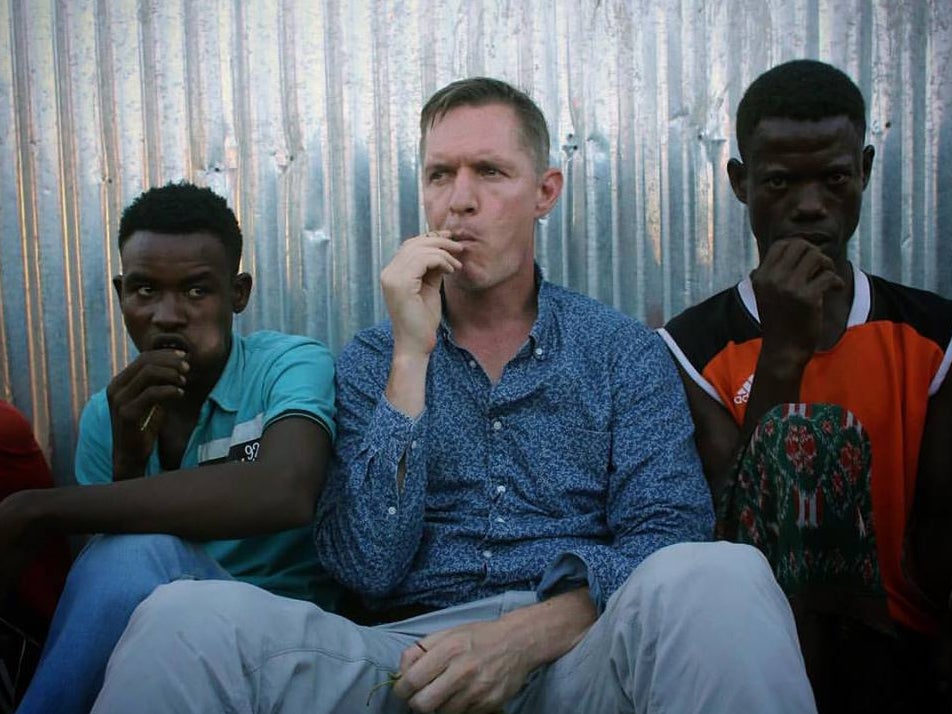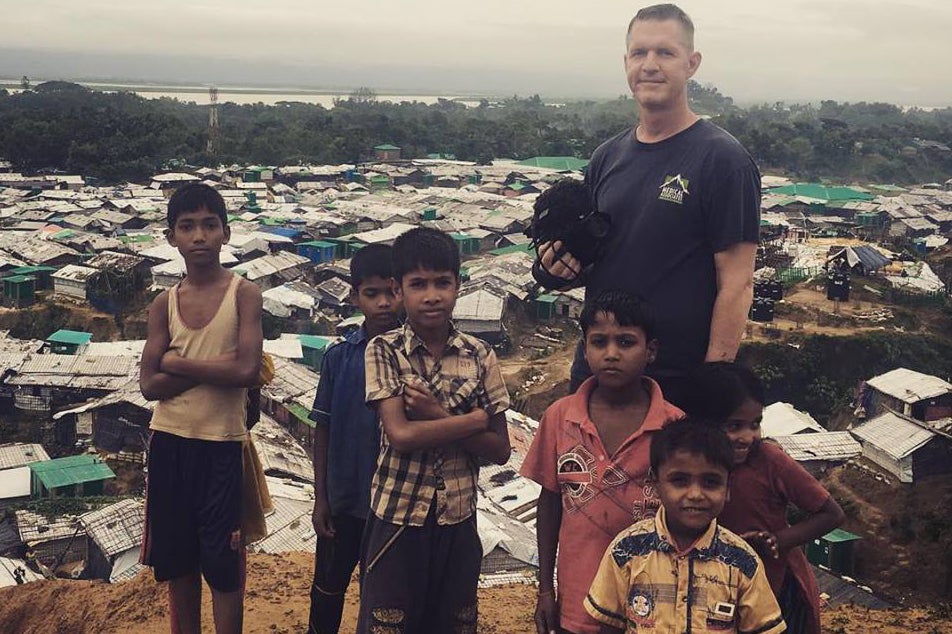The Independent's journalism is supported by our readers. When you purchase through links on our site, we may earn commission.
Andrew Berends: Documentary filmmaker and photographer who charted humanity under siege
When he was kidnapped in Nigeria, the Free Solo cameraman swallowed his sim card to avoid compromising his contacts

Your support helps us to tell the story
From reproductive rights to climate change to Big Tech, The Independent is on the ground when the story is developing. Whether it's investigating the financials of Elon Musk's pro-Trump PAC or producing our latest documentary, 'The A Word', which shines a light on the American women fighting for reproductive rights, we know how important it is to parse out the facts from the messaging.
At such a critical moment in US history, we need reporters on the ground. Your donation allows us to keep sending journalists to speak to both sides of the story.
The Independent is trusted by Americans across the entire political spectrum. And unlike many other quality news outlets, we choose not to lock Americans out of our reporting and analysis with paywalls. We believe quality journalism should be available to everyone, paid for by those who can afford it.
Your support makes all the difference.When Andrew Berends mentioned where he was emailing from, it wasn’t uncommon to have to look it up. “Just spent the night in Makassar and headed to Palu this afternoon,” he wrote to me in October shortly after the tsunami in Indonesia, sending me yet again to search Google Maps.
We were last supposed to meet December. I was coming through San Francisco and he was living in Berkeley but a last-minute project sent the award-winning documentary maker and photographer to Mali the night before. So it went with Andy. Though he grew up in Hastings-on-Hudson, about 40 miles north of New York City, and spent much of his adult life based in Brooklyn, Berends, who died aged 46, was most at home when he was – out there. In the world.
He lived for several stretches in Nairobi. His filmmaking took him from fishing boats off the Netherlands to war-torn villages in the Nuba Mountains of South Sudan; rebel bases in the Nigerian delta and combat zones in Iraq. Berends rushed straight to Haiti after the devastating earthquake in 2010, without so much as an assignment. In the past year or two he filmed projects for organisations such as the UN, Unicef and the Red Cross, covering natural disasters in Indonesia and North Carolina, and the Rohingya refugee crisis in Bangladesh.
But it was never the battles or devastation that he was looking to frame. It was the humanity caught in the middle. A humanity that this tall, lanky and blond American could uniquely connect to with deep empathy, no matter how out of place he looked in these remote villages of the world.

When Berends posted photographs in the field, they were frequently of him with that big smile, surrounded by children. Berends’ feature-length documentary, Madina’s Dream (2015), offered an unflinching, intimate look of the rebels and refugees of what he described as the “forgotten war” in South Sudan.
A year earlier, the New York Times’s Op-Docs series ran a five-minute version of that film, featuring two 11-year-old girls whom Berends came across in a refugee camp.
“When I met them, they were making open-air dollhouses filled with intricate figures they had sculpted from clay,” Berends wrote in the accompanying write-up. “They filled the houses with beds, pots and stoves, all remnants of their former lives.”

This was the exact kind of observation that defined his filmmaking, grounding his work with a touching specificity. Berends asked the girls to make more figures to express their experiences to him. The next day he found they’d made over a hundred, “including tanks, helicopters, rebels, machine guns and rocket-propelled grenades”.
He wrote, “[they] told me stories of witnessing family members killed by soldiers and how they hid in caves while airplanes bombed their village. They told me about walking for days to escape the war, and how they dreamed of one day returning home.”
Berends often risked his life to tell these stories. He spent six months working in and out of combat situations in Iraq in 2003, emerging with two documentaries released in 2005. The Blood of My Brother, which won the International Documentary Association’s “courage under fire” award, portrays the aftermath for the family of an Iraqi man killed by an American patrol while he was guarding a mosque.
When Adnan Comes Home follows the tragedy that unspools for a boy who is arrested for stealing two metres of electric cable. Berends always sought the complex humanity, not the simple headlines, from points of view that were scarcely seen.
In 2008 Berends spent weeks working his way into the camp of Nigerian rebels for what became The Delta Boys (2012), in which he explores the story of what drives two very different militants.
The film also pauses to capture the ordeal of a 22-year-old woman struggling to give birth in a nearby fishing village, with no medical care, as the rebels launch raids just across the river
Before he could finish filming, Berends was arrested by Nigerian officials and accused of spying. His passport and equipment were confiscated. He swallowed his sim card to protect his contacts. He was detained for 10 days before getting deported with no charges, worrying for the safety of his local translator.
One of Berends’ last projects, Free Solo (2018), for which he did additional camerawork, won the Academy Award for Best Documentary Feature less than a week before he died.
Andrew was born to author Polly Berrien Berends and Jan Berends. (He is survived by his brother, also called Jan, his sister-in-law Marsha Brofka-Berends, his niece Sylvia, and his father.)
After graduating from Hastings High School, he graduated with a BA in film studies from Wesleyan University in 1994. He then embarked a career of film-editing for advertising firms while directing his own documentaries – and shooting and editing for a host of other filmmakers and NGOs on locations around the world.
Berends survived bouts of serious depression, but a diagnosis of Parkinson’s disease last year, combined with other circumstances, appears to have resulted in his decision to take his own life. Two years ago, while in the depths of his struggles, Berends created a short showreel that is currently being shared widely as a testimony to his talents.
It highlights the fluid poetry of his cinematography, the intense intimacy, the closeness to battle and its effects on those caught around it that defined his filmmaking.
But nothing captures the essence of Andrew’s work like its final moments. A girl dashing to safety amid a violent clash, barefoot. Another girl kneeling in a field, staring as a band of soldiers march past her in the background. Perhaps his key strength was capturing these contrasts, the innocence surrounded by chaos that seemed to drive him.
Andrew Berends, documentary filmmaker and photographer, born 19 March 1972, died 1 March 2019
Join our commenting forum
Join thought-provoking conversations, follow other Independent readers and see their replies
Comments